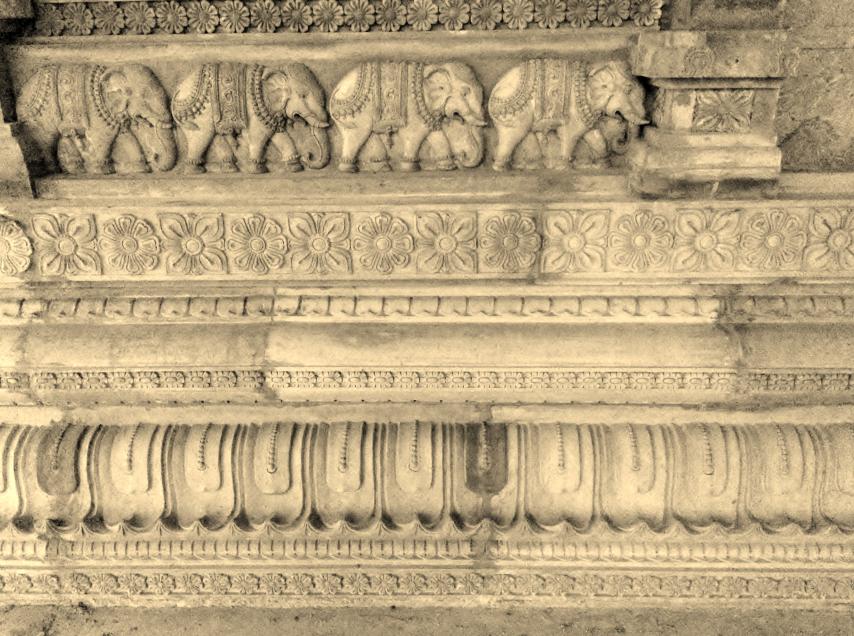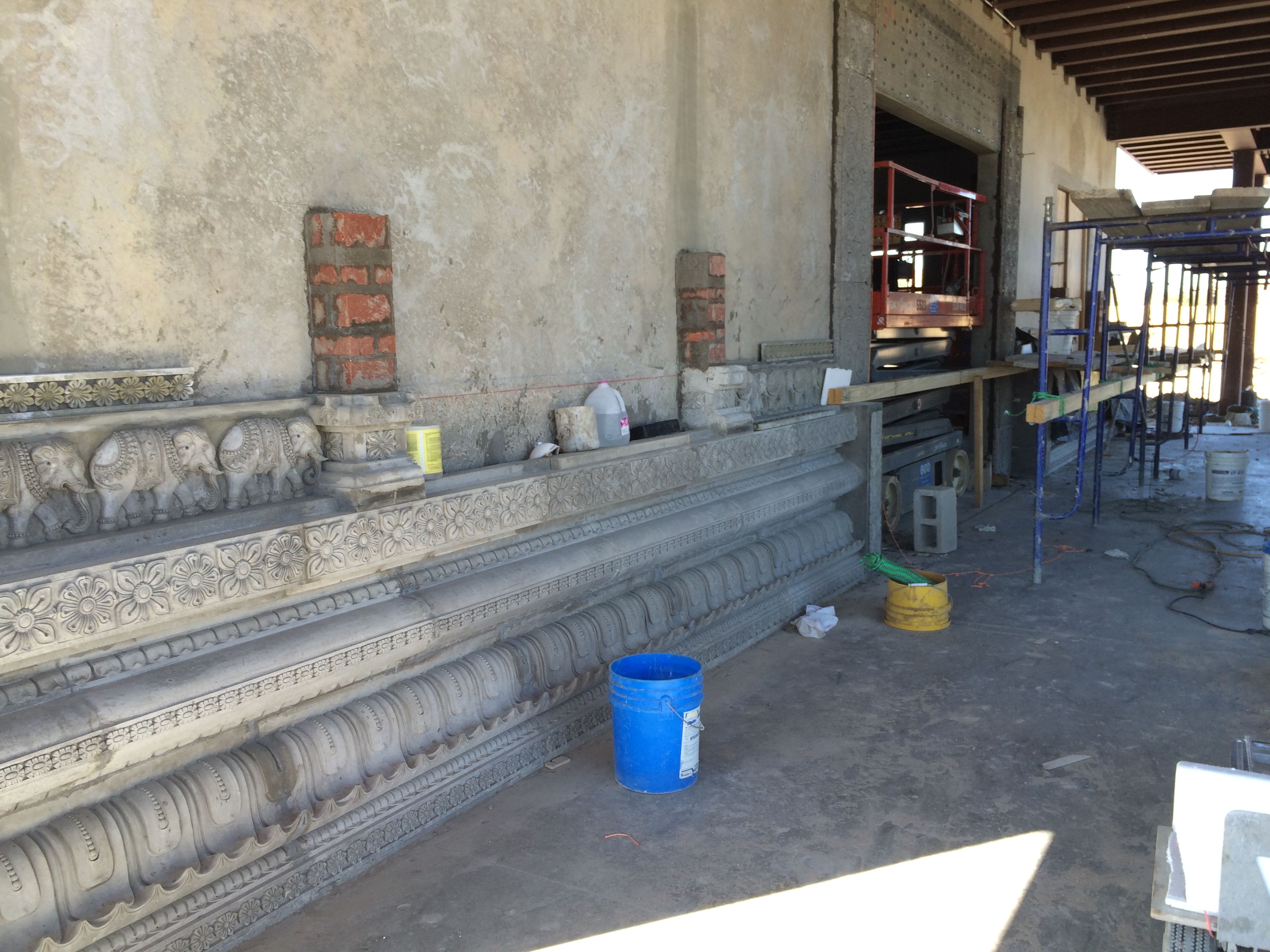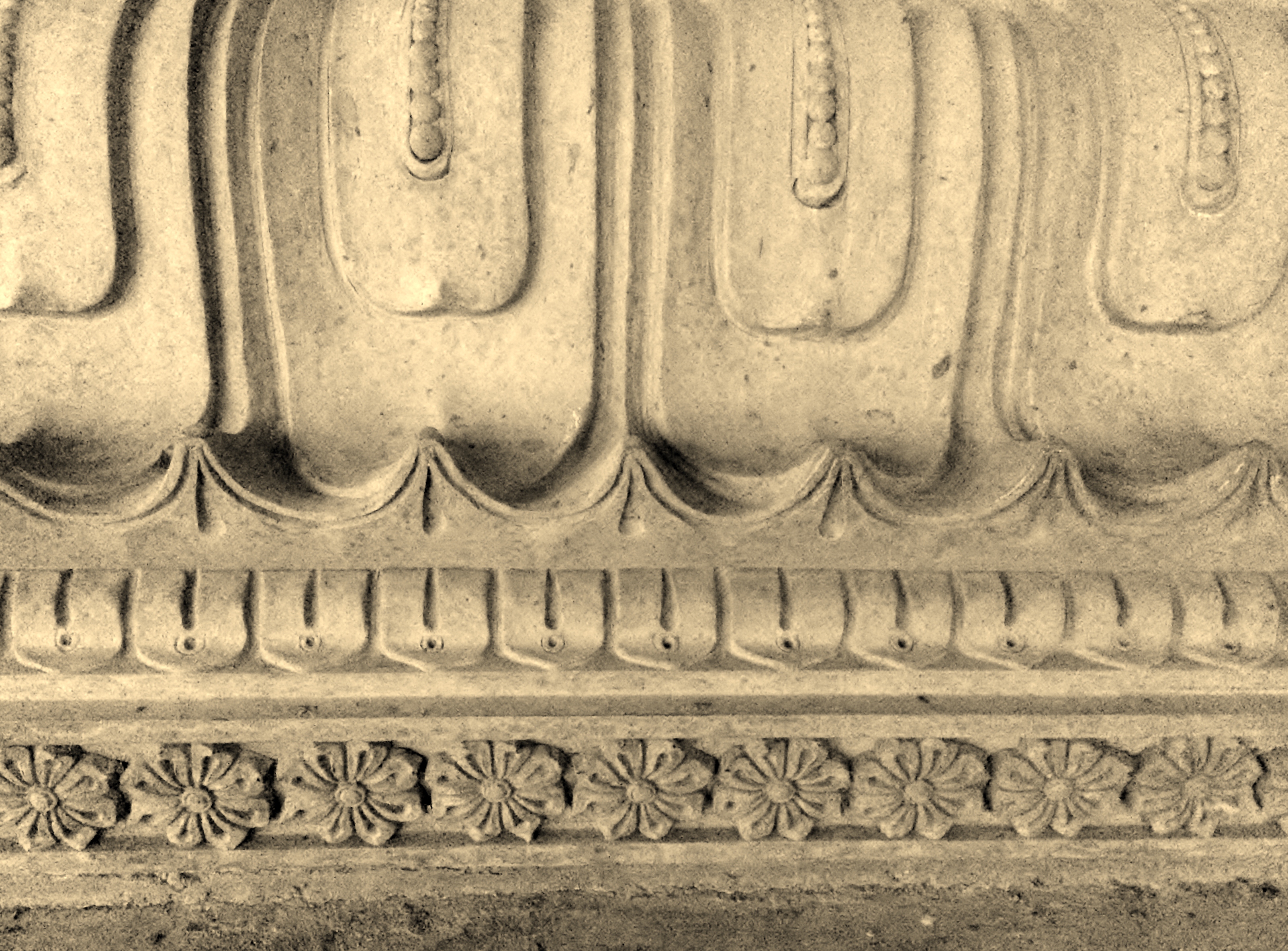
BUILDING A GLORIOUS TEMPLE BASE TO UPHOLD RADHA KRISHNA’S NEW DIVINE ABODE
Temple artisans commenced the installation of the elaborately designed adhisthana or temple base on the east side of the building. Temple architects to the base or adhisthana, in technical architectural terms is also called a plinth.
According to the Shilpa Shastras, the adhistana upholds the divine abode in all its glory as if on a raised pedestal. It also serves to enhance the fortitude and strength of its unique spiritual character and acts as a force of protection.
Elaborate sculptor work will adorn the base all around the temple building perimeter. Over the course of many weeks, the artisans hand sculpted, cast, and finally installed hundreds of spectacularly ornate architectural stone elements of the temple base on the east side.
Believe it or not, although already endowed with amazing artistry, these exquisite sculpture works will become even more immeasurably beautiful once the artisans embellish their awe-inspiring masterpieces with color.
Beginning from the very bottom and working our way to the top, let us together imagine the breathtaking beauty of the sculpture work with all the delicately painted beautiful colors!
First visualize the bottom of the temple base surrounded by a garland of ever white and fragant jasmine flowers. We find this underlying base of purity in the sweetly fragrant selfless love and devotion of Shri Radha Krishna.
Next, we find a garland of rose petals — traditionally a symbol of true love and devotion. These rose petals represent perfection and beauty in its purest form. Also the rose blossoming from the muddy earth represents renewal and the triumph of the spirit and divine love over matter.
Standing out due to their larger size, we can see the divine pinkish lotus flower petals, a most auspicious symbol of purity, serenity, enlightenment and peace.
A garland of genda or auspicious calendula flowers with bright saffron petals and a brownish center follow the graceful and divine soft pink lotus flowers. This flower’s protective nature makes up for its less pleasant scent.
Calendula’s saffron color represents renunciation. Hence we offer it to God as a symbol of surrender. With its erect stalk this flower also symbolizes trust in the divine and a will to overcome obstacles, and thus triumph of good over evil.
Above the calendula, we behold another garland of rose petals, perhaps reminding us that only surrender of the self brings us closer to the Divine.
Now visualize beautiful light pink water lily petals above the rose petals adorning the next level of the temple base. The water lily emerges from muddy waters. Though it lies in the water, it never gets wet. The lily stays untouched by the travails of the material world.
Above the water lily flower petals we can see the four-pointed pink flower of the clove tree with a hint of blue on its petals. These clove tree flowers alternate with delicately fragrant pure white jasmine flowers.
Next a ring of ornate elephants surround the temple. The artisans chose the elephants because they represent the strongest living form in creation, to symbolize the strength upon which the temple is based.
The artisans adorned the elephants with a strings of pure white pearls and small golden bells. They covered the elephant with a richly decorative reddish cloth lined with gold and string of large golden bells and white pearls near its tail. An ornate gold-laced cloth covers the elephant’s head. A gold ring glistens on each of its tusks.
Hear the bells of the elephant ring, reminding us of their powerful spiritual example. We are reminded of their steadfast obedience, calmness, and mental strength. Their large ears inspire us to hear more than we speak. Their mental strength inspires us to become equally unstoppable on the path to reach God.
Finally, we find native sunflowers above the elephants on the adhisthana or base. These flowers, along with many other native varieties, appeared on the scene after the groundbreaking ceremonies.
Obviously, these radiant flowers came yearning for darshan of beloved Shri Radha Krishna, The artisans sculpted this memory into the very top of the temple base.
The Radha Krishna Temple will serve as quite a unique landmark. It eagerly reminds us of the internal beauty and bliss of connecting with the Divine. We invite you to help manifest all this divine beauty and inspiration. Please support the temple construction. Visit the Radha Krishna Temple website to learn how you can leave your mark at http://www.radhakrishnatemple.net















